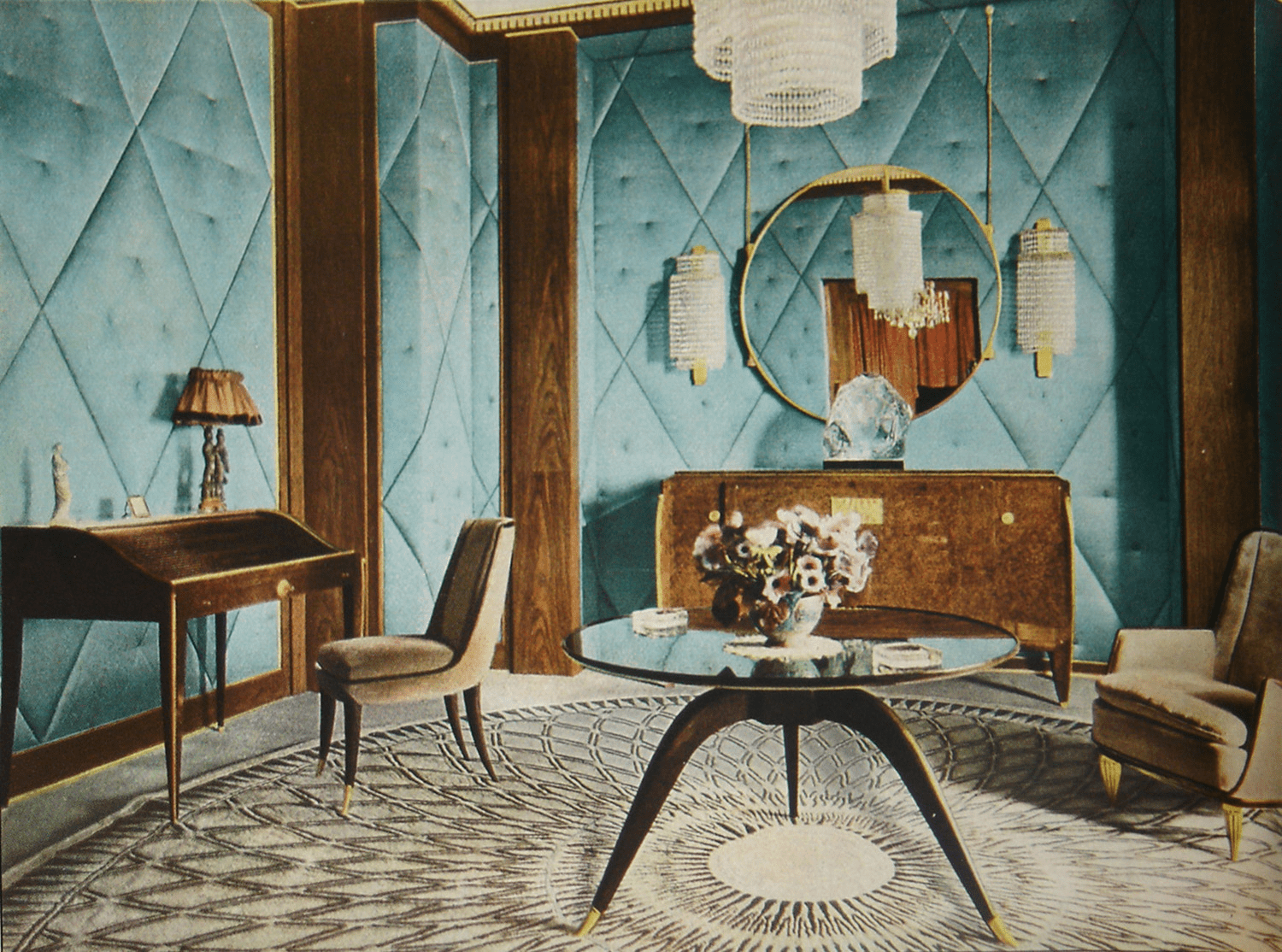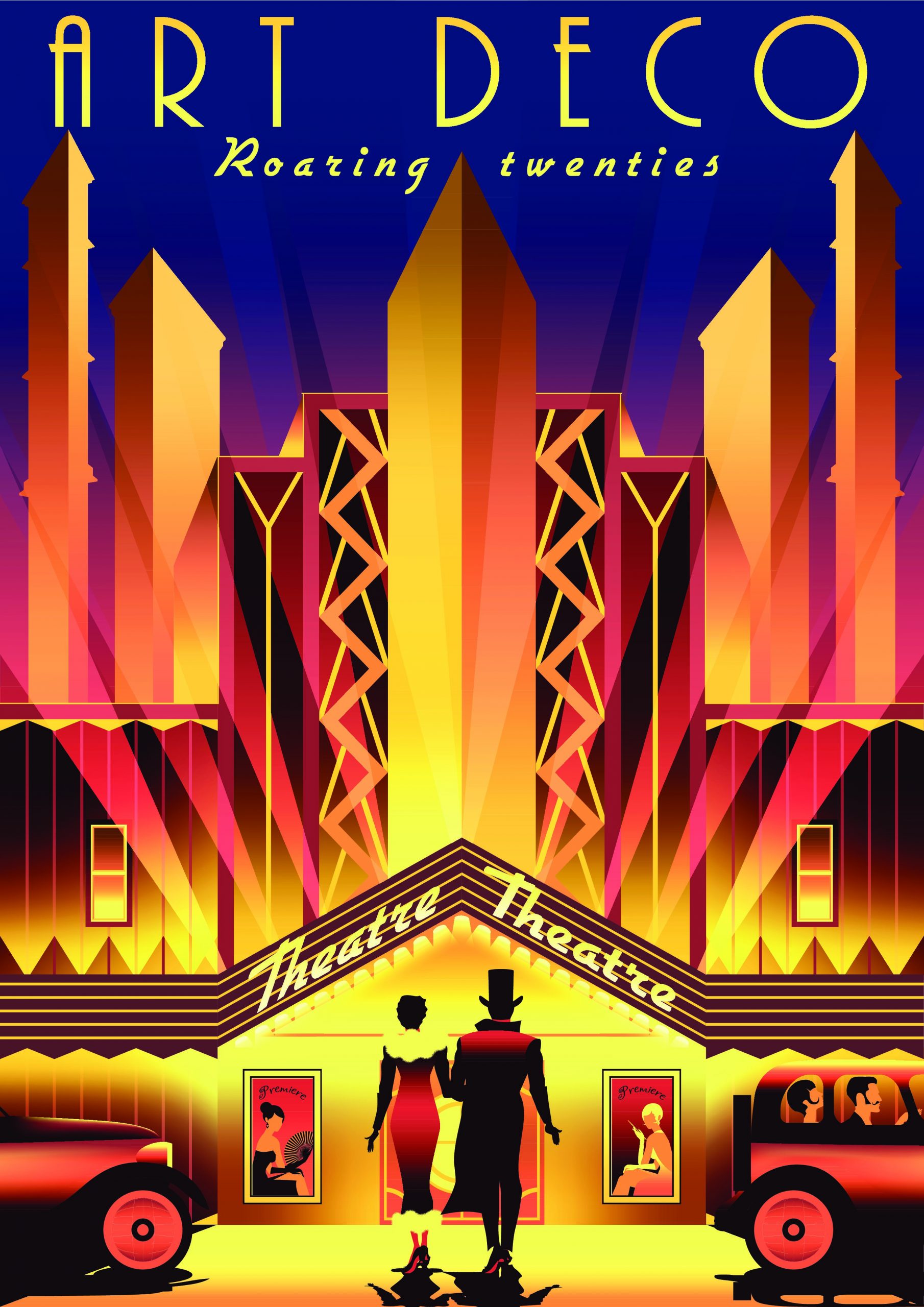
At Floorscapes, we have a passion for good design. On the daily, we find ourselves combing through interior design and architecture magazines appreciating the good work of contemporary designers. Knowing a little about the history of design, we often spot historical influences in today’s looks, even the most contemporary of them.
The reality is that the innovative and Modern design of today is built on a historical foundation and that it uses many tried and tested principles — balancing form and function, exploring the effects of colour, combining objects from the past and present and using images and symbols to create meaning.
So much about how design works can be learned from the past, which is why we decided to study up on our history with this series of blogs. We’ve already covered Arts & Crafts, Art Nouveau and Bauhaus. The next movement to pave the way to Modern design was Art Deco, which started in France in the 1920’s.
Historical Context
The Art Deco design movement grew out of Post WWI Europe and America, a time of prosperity and creative innovation. Arts & Crafts, Arts Nouveau and the Bauhaus movement had paved the way for a more minimal, mass manufacturable aesthetic, but Art Deco took on a particular flavour. It’s emphasis was not craftsmanship, organic forms or the austere minimalism of its predecessors, rather it was “modernism turned fashion.” It was an elegant look that utilized modern aesthetics but clad them in expensive materials and symbols of status. Eventually Art Deco came to symbolize wealth and sophistication.
By the 1930’s Art Deco was everywhere in first class architecture, furniture, jewelry, household objects, fashion, automobiles, theaters, trains, hotels and ocean liners. Regardless of the medium, Art Deco design has a very distinct look to it: simple streamlined shapes, modern geometric ornaments, images of power and prosperity and the use of expensive materials. You will find each aspect of Art Deco in the following four examples, as well as an embedded cultural expression of faith in glamour, speed, power and progress.
Room Scene – Émile-Jacques Ruhlmann
It’s not just the tell tale gem blue, brown and cream colour combinations that scream Art Deco here, it’s also the furniture, the surfaces and the materials in this room scene by designer Émile-Jacques Ruhlmann. All the furniture features simple geometric shapes in pared down constructions. Yet, typical of Art Deco, it is adorned in marbled wood, glass and brass hardware. The glass chandeliers, velvet wallpaper and intricate area rug are equally as exuberant. One could imagine this room in a first class ocean liner, hotel penthouse or theatre dressing room.
The Chrysler Building – William Van Alen
The famous Chrysler Building in New York City marked the apex of Art Deco in the U.S. When it was finished in 1931 it was the tallest and most recognizable skyscraper in the world. Its simple geometric shapes and lack of ornamentation scream Modern design. What makes it quintessential Art Deco, is that it combines modern metal cladding, traditional shapes (arches), modern shapes (triangles) and symbols of power and prosperity (gothic gargoyles). Not to mention it was built to house the Chrysler corporation, one of the richest automobile manufacturers at the time.
Atlas – Lee Lawrie – Rene Chambellan
This Art Deco sculpture of Atlas sits in the plaza in front of the Rockefeller building in New York City. Atlas, a figure from Greek mythology was a Titan (half-god, half-giant), who was tasked (volun-told) to carry the world on his shoulders for the rest of eternity. He is a symbol of order and power. You can see the Art Deco flavour in the sculpture’s material and in shape. Atlas’ bronze body is made of seemingly biomechanical shapes. His jawline and his pecs for example have the regular shapes of man-made machines more so than the human body.
If you have any more questions about incorporating an Art Deco look into your space and what flooring might compliment it well, send us an email or give us a call. Better yet, if you live in Calgary and you’re in the flooring market, stop by our showroom at 525 58th Aveue SE. The Floorscapes team has as much experience as we do passion: combined, we have over 150 years in the world of Calgary flooring. We offer our knowledge, our expertise and our aesthetic sensibility in order to help you create a space that you will love.






